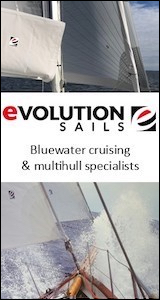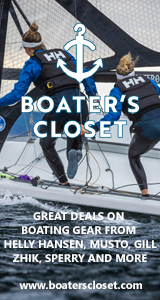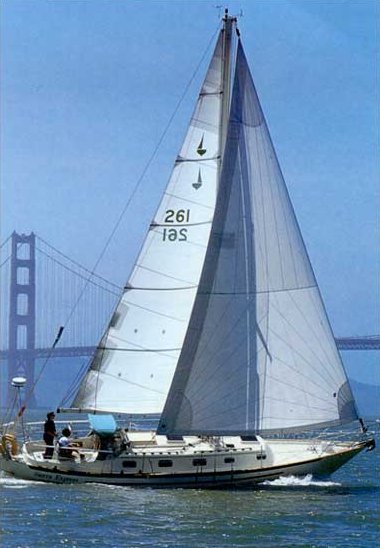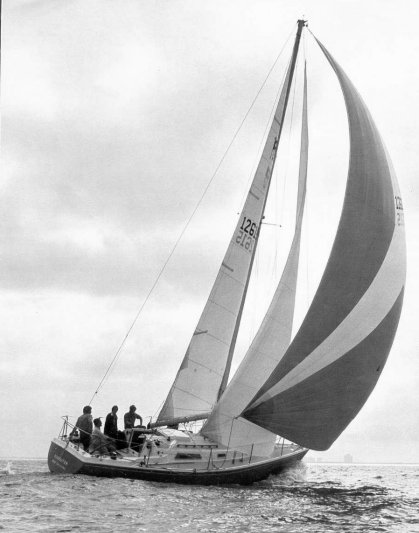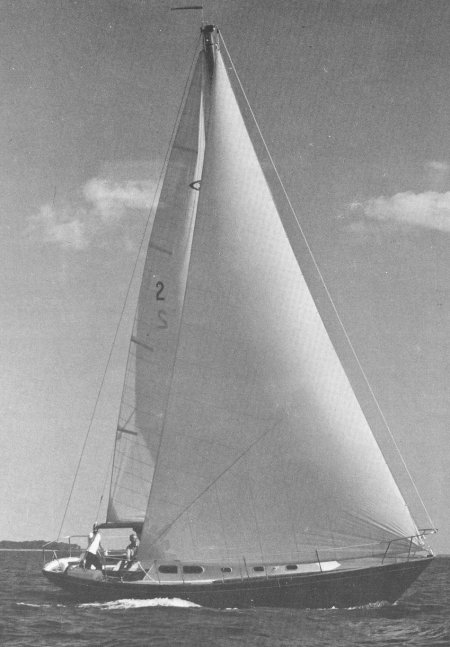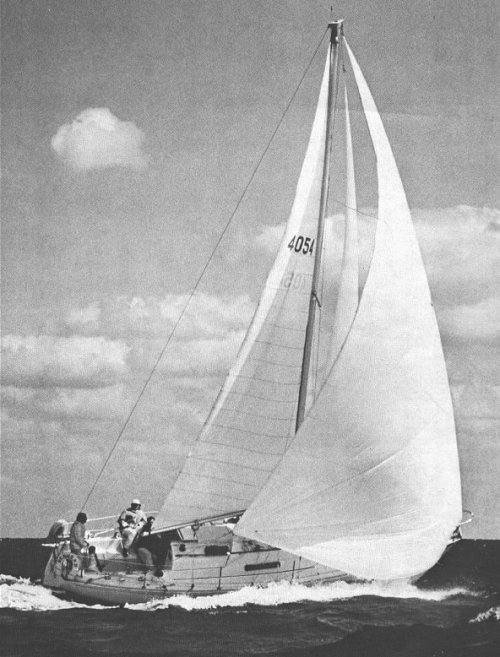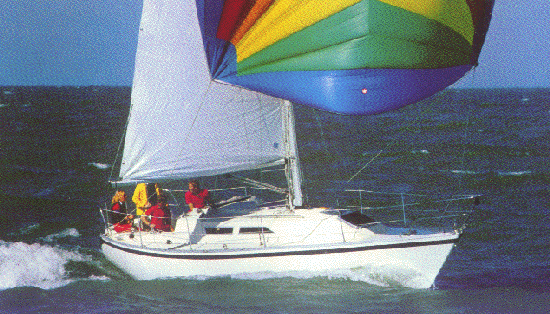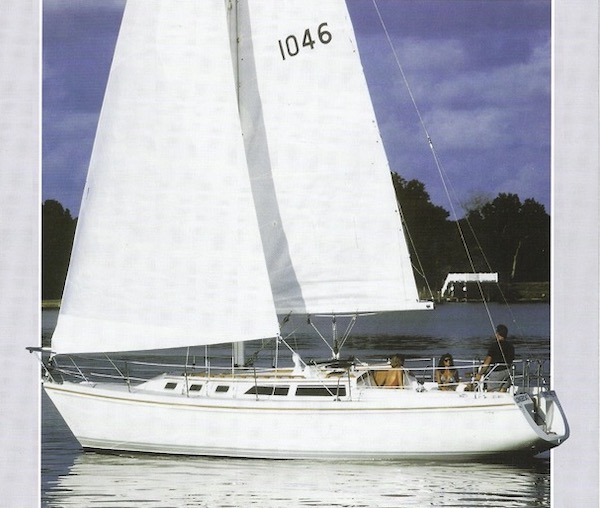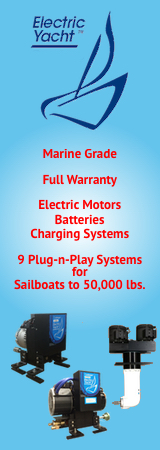The Pacific Seacraft 37 was designed as the CLIPPER MARINE 37. But the company failed before any were built. It was first built in 1978 by Cruising Consultants Inc. of Newport Beach, CA, as the CREALOCK 37. Later (1980) built by Pacific Seacraft as PACIFIC SEACRAFT 37.
Available as sloop, yawl or cutter.
Reported SA:
Cutter – 708 sqft
Yawl – 619 sqft
Rigs: Masthead Sloop
Design based on the OWENS CUTTER of 1946.
Shoal draft: 3.92′
The 10M came with several different engine installations. Most were powered by the Atomic Four gas engine. Diesels were optional with a Faryman 25hp in 75, a Westerbeake 20hp diesel in 76. the Faryman again in 77, and a Volvo 23hp (MD11) from 78-80.
Available with a taller rig:
I(IG): 46.00′ / 14.02m
J: 14.20′ / 4.33m
P: 40.50′ / 12.34m
E: 11.00′ / 3.35m
SA %100: 549.35 sq.ft. /51.03m2
Dimensions from builders literature. (1966)
First called the REDWING 35 and built by Hinterhoeller Ltd. a development of the INVADER 35. It was renamed the C&C 35 when Hinterhoeller was merged with C&C Yachts.
In 1973 a re-designed model was introduced, later designated the C&C 35-2. (or Mk II). In all, 351 C&C 35s were built. Production for the C&C 35-2 ended in 1975.
Differences between the 2 versions:
The nearly one foot increase in length of the Mk II is a result of raising the sheer several inches. In addition, the scimitar-shaped rudder of the MkI was replaced with a more conventional, partially balanced spade. The after sections of the MkII were reshaped to reflect the then-current IOR design trends, sail area was increased by a little over 50 square feet and an additional 620 pounds of ballast were added.
The deck and cabin house of the MkII were also modified eliminating the integral spray rail on the cabin top that was a prominent feature on the MkI. The cockpit was changed to a “T” configuration, and a bridge deck added for the mainsheet. The interior was spruced up to make it a little more yacht-like in appearance and, last but not least, all these changes resulted in a 30 % increase in displacement to 13,800 pounds, and draft increased from 5′ 3″ to 5′ 6″.
Construction of the 35 is a solid glass hull with balsa cored deck.
The interior is similar between the MKI and MKII models. The galley and navigation station are flip-flopped on the two models with the MKI having a starboard side galley aft and a port side quarter berth/navigation station combination. Both models have a fiberglass cabin sole and minimal bilge area.
The Universal Atomic 4 gas engine was the standard auxiliary power for both models. Some of the later MkII models were offered with Westerbeke diesel engines.
From 1983 to 1987 C&C built another 35 model, referred to here as the C&C 35 MKIII, which is an entirely different design.
Rendering appeared in ‘Yachting’ in 1966.
Other information from the Kettenburg web site, the best source for all things regarding this builder and it’s history.
It has been reported that is a ‘stretched’ version of the EASTERLY 36.
SHALLOW DRAFT VERSION:
Draft: 4.6’/1.4m.
Disp.: 10100 lbs./4581 kgs.
Ballast: 4400 lbs./1996 kgs.
Sail Area/Disp.: 17.35
Bal./Disp.: 43.57%
Total Catalina 34’s built: 1,438
Shoal keel:
-Draft: 4.67′
-Displacement: 12,600 lbs
-Ballast: 5,650 lbs
Originally only offered with the standard and shoal keels. A wing keel was introduced, replacing the shoal keel, on or before 1990.
Wing keel:
-Draft = 4.25′
-Displacement: 12.550 lbs
-Ballast: 5,600 lbs
1985-1986: Deck stepped mast; Universal 25 (21HP) diesel engine.
1987-1990: Changed to keel stepped mast; Universal 25XP (23 HP) engine.
1990-1991: Walk-through transom introduced (photo above); Universal M35 (30 HP).
The last Mark I models look very much like Mark IIs. (see CATALINA 34 MKII)
Tall Rig:
I: 46.0′
J: 13.5′
P: 40.5′
E: 12.0′
Photo courtesy Adam Hunt.
